2013년 2월~4월 중국의 환자에서 분리된 신형 조류 인플루엔자 A(H7N9) 바이러스의
유전적 분석 논문
일본의 국립전염병 연구소 인플루엔자 바이러스 연구센터, 도쿄대 의과학연구소 미생물 및
면역학교실, 국립농식품연구소 인플루엔자 및 프리온 연구 센터, 위스콘신-메디슨대학교
수의과대학 병리학교실, 일본 기푸대학교 수의대, 일본 과학기술청 ERATO 프로젝트 등의
연구자들이 공동으로 연구한 신형 조류 인플루엔자 A(H7N9) 바이러스의 유전적 분석 논문
신종 조류 인플루엔자 A(H7N9) 바이러스의 헤마글루티닌(HA)와 뉴라미다제의 유전자는
유라시안 인플루엔자 바이러스에서 유래한 것으로 추정되며, 나머지 유전자들은 H9N2
조류 인플루엔자 바이러스와 밀접한 연관이 있음. 헤마글루티닌(HA)과 PB2 RNA
폴리머라이즈에서 몇몇 특징적인 아미노산의 변화는 인간의 수용체에 결합을 촉진시킬
수도 있으므로 신종 조류 인플루엔자 A(H7N9) 바이러스의 대유행 가능성에 관심을
기울여야 함.
====================================
Rapid communications
Genetic analysis of novel avian A(H7N9) influenza viruses isolated from patients in China, February to April 2013
- Influenza Virus Research Center, National Institute of Infectious Diseases, Tokyo, Japan
- These authors contributed equally to this work
- Division of Virology, Department of Microbiology and Immunology, Institute of Medical Science, University of Tokyo, Tokyo, Japan
- Influenza and Prion Disease Research Center, National Institute of Animal Health, National Agriculture and Food Research Organization, Ibaraki, Japan
- Department of Pathobiological Sciences, School of Veterinary Medicine, University of Wisconsin-Madison, Madison, United States
- The United Graduate School of Veterinary Sciences, Gifu University, Gifu, Japan
- ERATO Infection-Induced Host Responses Project, Japan Science and Technology Agency, Saitama, Japan
- Department of Special Pathogens, International Research Center for Infectious Diseases, Institute of Medical Science, University of Tokyo, Tokyo, Japan
Date of submission: 08 April 2013
Novel influenza viruses of the H7N9 subtype have infected 33 and killed nine people in China as of 10 April 2013. Their haemagglutinin (HA) and neuraminidase genes probably originated from Eurasian avian influenza viruses; the remaining genes are closely related to avian H9N2 influenza viruses. Several characteristic amino acid changes in HA and the PB2 RNA polymerase subunit probably facilitate binding to human-type receptors and efficient replication in mammals, respectively, highlighting the pandemic potential of the novel viruses.
Humans are rarely infected with avian influenza viruses, with the exception of highly pathogenic avian influenza A(H5N1) viruses, which have caused 634 infections and 371 deaths as of 12 March 2013 [1]. A few isolated cases of human infection with viruses of the H7N2, H7N3, and H7N5 subtypes have been reported, but none were fatal [2-11]. In 2003, in the Netherlands, 89 people were infected with an influenza virus of the H7N7 subtype that caused conjunctivitis and one fatality [5,7].
On 19 February 2013, an 87 year-old man in Shanghai developed a respiratory infection and died on 4 March, and on 27 February 2013, a 27 year-old pork seller in a Shanghai market became ill and died on 10 March. A 35 year-old woman in Chuzhou City in Anhui province (west of Shanghai), who had contact with poultry, became ill on 15 March 2013, and remains hospitalised in critical condition. There is no known epidemiological relationship among these three cases. A 38 year-old man in Hangzhou (Zhejiang province, south of Shanghai) became ill on 7 March 2013 and died on 27 March. All four cases presented with respiratory infections that progressed to severe pneumonia and breathing difficulties.
On 31 March 2013, the Chinese Centre for Disease Control and Prevention announced the isolation in embryonated eggs of avian influenza viruses of the H7N9 subtype (designated A/Shanghai/1/2013, A/Shanghai/2/2013, and A/Anhui/1/2013) from the first three cases. The sequences of the coding regions of all eight viral genes were deposited in the influenza sequence database of the Global Initiative on Sharing All Influenza Data (GISAID) on 31 March (Table 1). On 5 April 2013, the Hangzhou Center for Disease Control and Prevention deposited the haemagglutinin (HA), neuraminidase (NA), and matrix (M) gene sequences of A/Hongzhou/1/2013 virus (Table 1), which was isolated in cell culture from samples obtained from the 38 year-old man.
Table 1. Origin of influenza A(H7N9) isolates included in the phylogenetic analysis, China, February–April 2013 (n=7)

All four human influenza A(H7N9) viruses are similar at the nucleotide and amino acid levels, suggesting a common ancestor. The HA gene of the novel viruses belongs to the Eurasian lineage of avian influenza viruses and shares ca. 95% identity with the HA genes of low pathogenic avian influenza A(H7N3) viruses isolated in 2011 in Zhejiang province (south of Shanghai) (Figure 1, Table 2). The NA gene of the novel viruses is ca. 96% identical to the low pathogenic avian influenza A(H11N9) viruses isolated in 2010 in the Czech Republic (Figure 1, Table 2).
Figure 1. Phylogenetic analysis of the haemagglutinin (A) and neuraminidase (B) genes of the novel influenza A(H7N9) viruses, China, February – April 2013 (n=7)
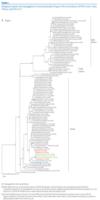
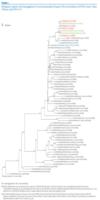
Table 2. Nucleotide identity of novel influenza A(H7N9) virus genes and their closest relative, China, February – April 2013
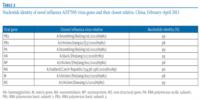
The sequences of the remaining viral genes are closely related (>97% identity) to avian influenza A(H9N2) viruses, which recently circulated in poultry in Shanghai, Zhejiang, Jiangsu, and neighbouring provinces of Shanghai (Table 2, Figure 2). These findings strongly suggest that the novel influenza A(H7N9) viruses are reassortants that acquired their H7 HA and N9 NA genes from avian influenza viruses, and their remaining genes from recent influenza A(H9N2) poultry viruses (Figure 1, Figure 3, Table 2).
Figure 2. Phylogenetic analysis of the six remaining genes of the novel influenza A(H7N9) viruses, China, February – April, 2013 (n=7)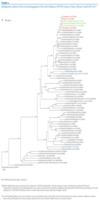
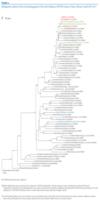
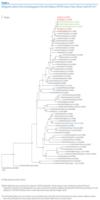
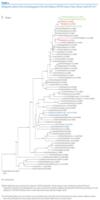
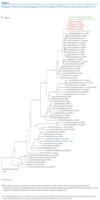
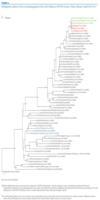
Figure3. Schematic diagram of novel influenza A(H7N9) virus generation 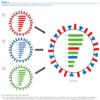
At the nucleotide level, A/Shanghai/2/2013, A/Anhui/1/2013, and A/Hangzhou/1/2013 share more than 99% identity and differ by no more than three nucleotides per gene, even though they were isolated in different cities several hundred kilometres apart. On 7 April 2013, the Harbin Veterinary Research Institute deposited the full genome sequences of isolates from a pigeon (A/pigeon/Shanghai/S1069/2013), a chicken (A/chicken/Shanghai/S1053/2013), and an environmental sample (A/environment/Shanghai/S1088/2013) that were collected on 2 and 3 April from a Shanghai market (Table 1). All eight genes of these three isolates are similar to those of A/Shanghai/2/2013 and A/Anhui/1/2013 at the nucleotide level, except for the PB1 gene of A/pigeon/Shanghai/S1069/2013, which belongs to a different lineage than the PB1 of the other H7N9 isolates (Figures 1 and 2).
Interestingly, A/Shanghai/1/2013 and A/Shanghai/2/2013 differ by 52 nucleotides (for example, there are 13 nucleotide and nine amino acid differences in their HA sequences) even though these two cases were identified in the same city and at around the same time. These findings suggest that A/Shanghai/2/2013, A/Anhui/1/2013, A/Hangzhou/1/2013, as well as the viruses from the chicken and the environment, share a closely related source of infection, whereas A/Shanghai/1/2013 and A/pigeon/Shanghai/S1069/2013 are likely to have originated from other sources.
Highly pathogenic avian influenza viruses are characterised by a series of basic amino acids at the HA cleavage site that enable systemic virus spread. The HA cleavage sequence of the novel influenza A(H7N9) viruses possesses a single basic amino acid (EIPKGR*GL; *indicates the cleavage site), suggesting that these viruses are of low pathogenicity in avian species.
The amino acid sequence of the receptor-binding site (RBS) of HA determines preference for human- or avian-type receptors. At this site, A/Shanghai1/2013 encodes an A138S* mutation (H3 numbering; Figure 4, Table 3), whereas A/Shanghai/2/2013, A/Anhui/1/2013, the two avian isolates, and the virus from the environmental sample encode G186V and Q226L mutations; any of these three mutations could increase the binding of avian H5 and H7 viruses to human-type receptors [12-14]. The finding of mammalian-adapting mutations in the RBS of these novel viruses is cause for concern. The A/Hangzhou/1/2013 isolate encodes isoleucine at position 226, which is found in seasonal influenza A(H3N2) viruses.
Figure 4. Amino acid changes in the novel influenza A(H7N9) viruses that may affect their receptor-binding properties, China, February – April 2013 (n=7)
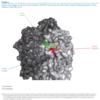
Table 3. Selected characteristic amino acids of the novel influenza A(H7N9) viruses, China, February – April 2013 (n=7)
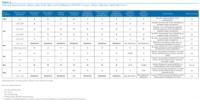
In addition, all seven influenza A(H7N9) viruses possess a T160A substitution (H3 numbering; Table 3) in HA, which is found in recently circulating H7 viruses; this mutation leads to the loss of an N-glycosylation site at position 158 (H3 numbering; position 149 in H7 numbering), which results in increased virus binding to human-type receptors [15].
Lysine at position 627 of the polymerase PB2 protein is essential for the efficient replication of avian influenza viruses in mammals [16] and has been detected in highly pathogenic avian influenza A(H5N1) viruses and in the influenza A(H7N7) virus isolated from the fatal case in the Netherlands in 2003 [17]. PB2-627K is rare among avian H9N2 PB2 proteins (i.e. it has been found in only five of 827 isolates). In keeping with this finding, the avian and environmental influenza A(H7N9) viruses analysed here encode PB2-627E. By contrast, all four human H7N9 viruses analysed here encode PB2-627K (Table 3).
Antiviral compounds are the first line of defense against novel influenza viruses until vaccines become available. All seven novel influenza A(H7N9) viruses sequenced to date encode the S31N substitution in the viral ion channel M2 (encoded by the M segment) (Table 3), which confers resistance to ion channel inhibitors [18,19]. Based on the sequences of their NA proteins, all H7N9 viruses analysed here, with the exception of A/Shanghai/1/2013, should be sensitive to neuraminidase inhibitors (Table 3). However, the R294K mutation in the NA protein of A/Shanghai/1/2013 is known to confer resistance to NA inhibitors in N2 and N9 subtype viruses [20], and is therefore of great concern.
All H7N9 viruses encode a deletion at positions 69–73 of the NA stalk region (Table 3), which is reported to occur upon virus adaptation to terrestrial birds. This finding suggests that the novel H7N9 viruses (or their ancestor) may have circulated in terrestrial birds before infecting humans. Moreover, this deletion is associated with increased virulence in mammals [21].
The influenza A virus PB1-F2 protein (encoded by the PB1 segment) is also associated with virulence. The available sequences indicate that the H7N9 PB1 genes of all of the human viruses encode a full-length PB1-F2 of 90 amino acids, but lack the N66S mutation that is associated with the increased pathogenicity of the 1918 pandemic virus and the highly pathogenic avian influenza A(H5N1) viruses [22]. Interestingly, the pigeon isolate encodes a truncated PB1-F2 of only 25 amino acids; the significance of this truncation is unknown.
The NS1 protein (encoded by the NS segment) is an interferon antagonist with several functions in the viral life cycle. All available H7N9 NS1 sequences lack the C-terminal PDZ domain-binding motif; the lack of the PDZ domain-binding motif may attenuate these viruses in mammals [23].
Other amino acids in the NS1 and matrix (M1; encoded by the M segment) proteins of the novel viruses are also associated with increased virulence (Table 3) [24.25]. However, these amino acids are found in many avian influenza viruses, and therefore, their significance for the biological properties of the novel influenza A(H7N9) viruses is currently unclear.
In conclusion, we here present a biological evaluation of the sequences of the avian influenza A(H7N9) viruses that caused fatal human infections in China. These viruses possess several characteristic features of mammalian influenza viruses, which are likely to contribute to their ability to infect humans and raise concerns regarding their pandemic potential.
Acknowledgements
We are grateful to Dr. Shu Yuelong, Chinese National Influenza Center, Chinese Center for Disease Control and Prevention, Beijing, China, for his rapid publication of the entire gene sequence data of A(H7N9) viruses isolated from human cases in China, and also for his information sharing and advice to this study. We also thank Susan Watson for scientific editing. This work was supported by Grants-in-Aid for Pandemic Influenza Research (TK, SF, HX, and MT) and Grant-in-Aid for Specially Promoted Research (MT) from the Ministry of Health, Labour and Welfare, Japan, by the NIAID-funded Center for Research on Influenza Pathogenesis (CRIP, HHSN266200700010C)(YK), by a Grant-in-Aid for Specially Promoted Research, by the Japan Initiative for Global Research Network on Infectious Diseases from the Ministry of Education, Culture, Sports, Science, and Technology, Japan (YK), and by ERATO, Japan (YK).
Authors contributions
Designed the analyses: TK, SF, ET, SY, GN, YK, MT. Analysed and interpreted data: TK, SF, ET, HX, SY, YU, GN, YK, MT. Drafted the article: TK, SF. Revised the article: ET, GN, TS, YK, MT.
Conflict of interest
None declared.
This manuscript was accepted on 11 April 2013 and published online on 12 April 2013.
*Authors’ correction: The mutation A138S was erroneously written as S138A in the original publication. This mistake was corrected on 13 April 2013
References
- World Health Organization (WHO)/Global Influenza Programme. Cumulative number of confirmed human cases for avian influenza A(H5N1) reported to WHO, 2003-2013. Geneva: WHO: 12 Mar 2013. Available from: http://www.who.int/influenza/human_animal_interface/EN_GIP_20130312CumulativeNumberH5N1cases.pdf
- Campbell CH, Webster RG, Breese SS Jr. Fowl plague virus from man. J Infect Dis. 1970;122(6):513-6. http://dx.doi.org/10.1093/infdis/122.6.513. PMid:5489075.
- Centers for Disease Control and Prevention (CDC). Update: influenza activity-United States and worldwide, 2003-04 season, and composition of the 2004-05 influenza vaccine. MMWR Morb Mortal Wkly Rep. 2004;53(25):547-52. PMid:15229411.
- Editorial team. Avian influenza A/(H7N2) outbreak in the United Kingdom. Euro Surveill. 2007;12(22): :pii=3206. Available from: http://www.eurosurveillance.org/ViewArticle.aspx?ArticleId=3206
- Fouchier RA, Schneeberger PM, Rozendaal FW, Broekman JM, Kemink SA, Munster V, et al. Avian influenza A virus (H7N7) associated with human conjunctivitis and a fatal case of acute respiratory distress syndrome. Proc Natl Acad Sci U S A. 2004;101(5):1356-61. http://dx.doi.org/10.1073/pnas.0308352100. PMid:14745020 PMCid:337057.
- Hirst M, Astell CR, Griffith M, Coughlin SM, Moksa M, Zeng T, et al. Novel avian influenza H7N3 strain outbreak, British Columbia. Emerg Infect Dis. 2004;10(12):2192-5. http://dx.doi.org/10.3201/eid1012.040743. PMid:15663859. PMCid:3323367.
- Koopmans M, Wilbrink B, Conyn M, Natrop G, van der Nat H, Vennema H, et al. Transmission of H7N7 avian influenza A virus to human beings during a large outbreak in commercial poultry farms in the Netherlands. Lancet. 2004;363(9409):587-93. http://dx.doi.org/10.1016/S0140-6736(04)15589-X.
- Kurtz J, Manvell RJ, Banks J. Avian influenza virus isolated from a woman with conjunctivitis. Lancet. 1996;348(9031):901-2. http://dx.doi.org/10.1016/S0140-6736(05)64783-6.
- Nguyen-Van-Tam JS, Nair P, Acheson P, Baker A, Barker M, Bracebridge S, et al. Outbreak of low pathogenicity H7N3 avian influenza in UK, including associated case of human conjunctivitis. Euro Surveill. 2006;11(18): pii=2952. Available from: http://www.eurosurveillance.org/ViewArticle.aspx?ArticleId=2952. PMid:16816456.
- Taylor HR, Turner AJ. A case report of fowl plague keratoconjunctivitis. Br J Ophthalmol. 1977;61(2):86-8. http://dx.doi.org/10.1136/bjo.61.2.86.
- Tweed SA, Skowronski DM, David ST, Larder A, Petric M, Lees W, et al. Human Illness from Avian Influenza H7N3, British Columbia. Emerg Infect Dis. 2004;10(12):2196-9. http://dx.doi.org/10.3201/eid1012.040961. PMid:15663860 PMCid:3323407.
- Srinivasan K, Raman R, Jayaraman A, Viswanathan K, Sasisekharan R. Quantitative description of glycan-receptor binding of influenza A virus H7 hemagglutinin. PLoS One. 2013;8(2):e49597. http://dx.doi.org/10.1371/journal.pone.0049597. PMid:23437033 PMCid:3577880.
- Nidom CA, Takano R, Yamada S, Sakai-Tagawa Y, Daulay S, Aswadi D, et al. Influenza A(H5N1) viruses from pigs, Indonesia. Emerg Infect Dis. 2010;16(10):1515-23. http://dx.doi.org/10.3201/eid1610.100508. PMid:20875275. PMCid:3294999.
- Yang H, Chen LM, Carney PJ, Donis RO, Stevens J. Structures of receptor complexes of a North American H7N2 influenza hemagglutinin with a loop deletion in the receptor binding site. PLoS Pathog. 2010;6(9):e1001081. http://dx.doi.org/10.1371/journal.ppat.1001081. PMid:20824086 PMCid:2932715.
- Wang W, Lu B, Zhou H, Suguitan AL Jr, Cheng X, Subbarao K, et al. Glycosylation at 158N of the hemagglutinin protein and receptor binding specificity synergistically affect the antigenicity and immunogenicity of a live attenuated H5N1 A/Vietnam/1203/2004 vaccine virus in ferrets. J Virol. 2010;84(13):6570-7. http://dx.doi.org/10.1128/JVI.00221-10. PMid:20427525 PMCid:2903256.
- Hatta M, Gao P, Halfmann P, Kawaoka Y. Molecular basis for high virulence of Hong Kong H5N1 influenza A viruses. Science. 2001;293(5536):1840-2. http://dx.doi.org/10.1126/science.1062882. PMid:11546875.
- Munster VJ, de Wit E, van Riel D, Beyer WE, Rimmelzwaan GF, Osterhaus AD, et al. The molecular basis of the pathogenicity of the Dutch highly pathogenic human influenza A H7N7 viruses. J Infect Dis. 2007;196(2):258-65. http://dx.doi.org/10.1086/518792. PMid:17570113.
- Hay AJ, Wolstenholme AJ, Skehel JJ, Smith MH. The molecular basis of the specific anti-influenza action of amantadine. EMBO J. 1985;4(11):3021-4. PMid:4065098 PMCid:554613.
- Pinto LH, Holsinger LJ, Lamb RA. Influenza virus M2 protein has ion channel activity. Cell. 1992;69(3):517-28. http://dx.doi.org/10.1016/0092-8674(92)90452-I.
- McKimm-Breschkin JL, Sahasrabudhe A, Blick TJ, McDonald M, Colman PM, Hart GJ, et al. Mutations in a conserved residue in the influenza virus neuraminidase active site decreases sensitivity to Neu5Ac2en-derived inhibitors. J Virol. 1998;72(3):2456-62. PMid:9499107. PMCid:109546.
- Matsuoka Y, Swayne DE, Thomas C, Rameix-Welti MA, Naffakh N, Warnes C, et al. Neuraminidase stalk length and additional glycosylation of the hemagglutinin influence the virulence of influenza H5N1 viruses for mice. J Virol. 2009;83(9):4704-8. http://dx.doi.org/10.1128/JVI.01987-08. PMid:19225004 PMCid:2668507.
- Conenello GM, Zamarin D, Perrone LA, Tumpey T, Palese P. A single mutation in the PB1-F2 of H5N1 (HK/97) and 1918 influenza A viruses contributes to increased virulence. PLoS Pathog. 2007;3(10):1414-21. http://dx.doi.org/10.1371/journal.ppat.0030141. PMid:17922571. PMCid:2000966.
- Jackson D, Hossain MJ, Hickman D, Perez DR, Lamb RA. A new influenza virus virulence determinant: the NS1 protein four C-terminal residues modulate pathogenicity. Proc Natl Acad Sci U S A. 2008;105(11):4381-6. http://dx.doi.org/10.1073/pnas.0800482105. PMid:18334632 PMCid:2393797.
- Fan S, Deng G, Song J, Tian G, Suo Y, Jiang Y, et al. Two amino acid residues in the matrix protein M1 contribute to the virulence difference of H5N1 avian influenza viruses in mice. Virology. 2009;384(1):28-32. http://dx.doi.org/10.1016/j.virol.2008.11.044. PMid:19117585.
- Jiao P, Tian G, Li Y, Deng G, Jiang Y, Liu C, et al. A single-amino-acid substitution in the NS1 protein changes the pathogenicity of H5N1 avian influenza viruses in mice. J Virol. 2008;82(3):1146–54. http://dx.doi.org/10.1128/JVI.01698-07. PMid:18032512 PMCid:2224464
- Kimura M. A simple method for estimating evolutionary rates of base substitutions through comparative studies of nucleotide sequences. J Mol Evol. 1980;16(2):111-20. http://dx.doi.org/10.1007/BF01731581. PMid:7463489.
- González-Reiche AS, Morales-Betoulle ME, Alvarez D, Betoulle JL, Müller ML, Sosa SM, et al. Influenza A viruses from wild birds in Guatemala belong to the North American lineage. PLoS One. 2012;7(3):e32873. http://dx.doi.org/10.1371/journal.pone.0032873. PMid:22427902 PMCid:3302778.
- Kim HR, Park CK, Lee YJ, Oem JK, Kang HM, Choi JG, et al. Low pathogenic H7 subtype avian influenza viruses isolated from domestic ducks in South Korea and the close association with isolates of wild birds. J Gen Virol. 2012;93(Pt 6):1278-87. http://dx.doi.org/10.1099/vir.0.041269-0. PMid:22422062.
============================================
H7N9 genetic analysis raises concern over pandemic potential
Apr 12, 2013 (CIDRAP News) – A new analysis of H7N9 genetic sequences from the first Chinese patients infected with the virus and from poultry markets found more signals that the virus can attach and replicate efficiently in the airways of humans and other mammals, raising concerns about the virus’s pandemic potential.
The new findings, published late yesterday in Eurosurveillance, are the first detailed comparison of both the human and market sequences. Results are similar to the genetic details of samples from the first three cases reported by Chinese scientists yesterday in the New England Journal of Medicine.
The new results also affirm early observations from some experts that the novel virus has adapted to infect mammals, yielding more information that health officials need to gauge the pandemic threat from the new virus.
The research team from Japan includes Yoshihiro Kawaoka, DVM, PhD, who heads a group at the University of Wisconsin that has done extensive genetic studies on the H5N1 virus, and Masato Tashiro, MD, PhD, director of the World Health Organization Collaborating Center for Reference and Research on Influenza at Japan’s National Institute of Infectious Diseases in Tokyo.
Their look at sequences from influenza databases included human samples from the first two patients from Shanghai, as well as from a woman from Anhui province and a man from Hangzhou province. All of the patients died.
Samples from a market in Shanghai include isolates from a pigeon, a chicken, and an environmental sample.
Phylogenetic analysis of the four human samples suggest they have a common ancestor, with the hemagglutinin (HA) gene part of the Eurasian avian influenza lineage and closely resembling HA genes of low-pathogenic H7N3 viruses detected in 2011 in Zhejiang province, south of Shanghai. The group reported that the neuraminidase (NA) gene closely resembles a low-pathogenic H11N9 virus found in the Czech Republic in 2010.
Internal genes of the H7N9 virus were closely related to H9N2 avian flu viruses that recently circulated in poultry in Shanghai, as well as Zhejiang and Jiangsu provinces, according to the report. Researchers said the findings strongly suggest that the new viruses are reassortants that got their HA and NA genes (the H7 and N9) from avian influenza viruses and the rest of their genes from recent H9N2 poultry viruses.
When they compared the nucleotides from the four human specimens, they found that one of the Shanghai samples and the ones from Anhui and Hangzhou were 99% similar, despite the fact that they came from cities that were several hundred kilometers apart. They found differences between the two Shanghai samples and noted other patterns with the human and market samples that suggest five of the viruses came from a closely related infection source, while one of the Shanghai samples and the one from the pigeon came from different sources.
The Japan group’s findings appear to echo the report from Chinese researchers yesterday that there have been at least two introductions into humans.
The Japanese researchers also detected mutations increase binding to human receptors, a key marker health officials use to gauge the infectivity of new flu viruses. They found that the two Shanghai strains and the Anhui strain had mutations that increase the binding of H5 and N7 viruses to human-type receptors.
One was the Q226L mutation, also flagged by Chinese researchers yesterday. It has been linked to the spread of respiratory droplets in ferrets and was a finding in two controversial studies—one by Kawaoka’s group—in 2012 involving lab-modified H5N1 strains.
“The finding of mammalian-adapting mutations in the RBS [receptor-binding site] of these novel viruses is cause for concern,” the investigators wrote.
The isolate from the Hangzhou patient had a genetic marker (isoleucine at position 226) found in seasonal H3N2 flu viruses.
All seven of the viruses had an HA substitution seen in other recently circulating H7 viruses that has been linked to increased binding to human-type receptors, according to the report.
In the polymerase PB2 protein, they found a marker in the human samples that is essential for efficient replication and has been seen in H5N1 viruses and in an H7N7 sample that was isolated from a fatal case in the Netherlands in 2003.
When they looked for mutations that influence sensitivity to antiviral medications, they projected that all of the human H7N9 samples should be sensitive to neuraminidase inhibitors, except for one of the Shanghai samples. The exception has a R294K mutation in the NA protein that has been linked to resistance in N2 and N9 flu subtypes, which is concerning, the team wrote.
Neuraminidase inhibitors are the most common types of flu antiviral drugs prescribed and include oseltamivir (Tamflu) and zanamivir (Relenza).
Researchers also found some virulence markers, including one at the NA stalk and the other in the PB1-F2 protein; however, they said the human sequences so far lack the N66S mutation that was associated with increased pathogenicity of the 1918 pandemic virus and the H5N1 virus.
The mutation they saw at the NA stalk can occur when the virus adapts to terrestrial birds, which suggests the novel H7N9 virus or their ancestors may have circulated in terrestrial birds before infecting humans. So far, the host of the virus has not been identified, and health officials are considering a range of animals.
The H7N9 virus sequences also showed an NS1 protein sequence pattern that might attenuate the viruses in mammals.
Taken together, the findings present a somewhat clearer picture of the threat the new virus could pose, the group concluded.
“These viruses possess several characteristic features of mammalian influenza viruses, which are likely to contribute to their ability to infect humans and raise concerns regarding their pandemic potential,” they wrote.
Kageyama T, Fujisaki S, Takashita E, at al. Genetic analysis of novel avian influenza A (H7N9) influenza viruses isolated from patients in China, February to April 2013. Eurosurveill 2013 Apr 11;18(15) [Full text]
=================================
日研究称H7N9病毒有易感染哺乳类动物的特征
2013年04月15日 08:40
来源:人民网
http://news.ifeng.com/mainland/special/h7n9/content-3/detail_2013_04/15/24215401_0.shtml
原标题:日研究说H7N9病毒有易感染哺乳类动物的特征
新华网东京4月13日电(记者 蓝建中)日本研究人员在新一期医学刊物《欧洲监测》上报告说,对H7N9禽流感病毒的分析显示,其基因中有多个容易感染哺乳类动物的特征,因此增加了传染给人和发生流行的可能性。
日本国立传染病研究所流感病毒研究中心主任田代真人等人报告说,他们分析了中方公布的H7N9禽流感病毒的相关数据,特别是在上海等地发病的4名患者和市场上鸽子等禽类体内检测出的病毒遗传信息,发现这种病毒具有容易附着到人类等哺乳动物细胞上的特征。
研究人员还认为,这种病毒在感染人类之前,应该已经在一些陆生鸟类之间循环传播,可能在这个过程中变异出了感染哺乳类动物的能力,病毒在哺乳类动物体内病原性增强可能与此有关。
2013年04月15日 08:40
来源:人民网
http://news.ifeng.com/mainland/special/h7n9/content-3/detail_2013_04/15/24215401_0.shtml
原标题:日研究说H7N9病毒有易感染哺乳类动物的特征
新华网东京4月13日电(记者 蓝建中)日本研究人员在新一期医学刊物《欧洲监测》上报告说,对H7N9禽流感病毒的分析显示,其基因中有多个容易感染哺乳类动物的特征,因此增加了传染给人和发生流行的可能性。
日本国立传染病研究所流感病毒研究中心主任田代真人等人报告说,他们分析了中方公布的H7N9禽流感病毒的相关数据,特别是在上海等地发病的4名患者和市场上鸽子等禽类体内检测出的病毒遗传信息,发现这种病毒具有容易附着到人类等哺乳动物细胞上的特征。
研究人员还认为,这种病毒在感染人类之前,应该已经在一些陆生鸟类之间循环传播,可能在这个过程中变异出了感染哺乳类动物的能力,病毒在哺乳类动物体内病原性增强可能与此有关。
 Staff Writer
Staff Writer